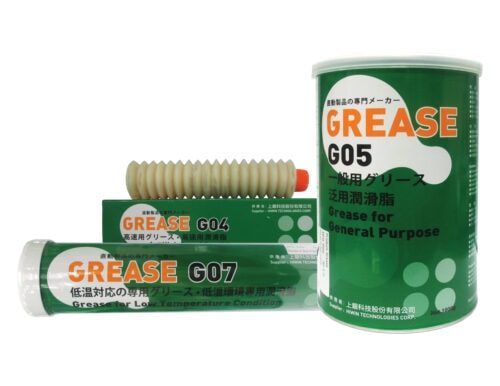Everything You Need to Know About Bearing Lubricants
Bearing lubricant decreases the friction between bearing balls or rollers and the raceway. Left unchecked, this friction can generate heat that causes premature part degradation or breakage. Improper or insufficient lubrication can result in machinery malfunction, and costly maintenance and downtime. But the right lubricant can minimize friction, dissipate heat away from moving components, and reduce fatigue and corrosion to maximize service life. Lubricants also help prevent moisture from reaching the ball bearings by applying a hydrophobic film around the bearing.
Here we’ll discuss the different types of bearing lubricants, their pros and cons, and other important considerations before investing in a lubrication product for your system.
Bearing Lubricant: Oil or Grease?
Grease
There are two main types of lubricants available for bearings: oil and grease. There is also a third option, solid lubrication, for low-maintenance applications.

Grease for bearings is a semi-fluid, to solid, substance consisting of a lubricant mixed with a thickening agent. The lubricant can be an ester, mineral oil, or silicone. The thickener can be an organic or inorganic soap. Its consistency changes as the bearings turn and temperatures increase, causing the grease to thin. A key advantage of grease is its ability to provide lubrication during every stage of ball bearing movement.
Grease made of synthetic elements can perform well in very low or high temperatures.
Oil
Bearing oil is a versatile lubricant that can be applied in different ways based on the volume, speed, and other needs of the system. Compared to grease, oil can more effectively dissipate heat and allows for higher limiting speeds.
Advantages and Disadvantages of Oil and Grease Bearing Lubricants
Determining the right fit for your ball-bearing systems can better ensure the performance and longevity of your equipment. Take a deeper look at the advantages and potential disadvantages of oil and grease.
Oil
Oils provide a more powerful degree of protection for machinery that needs temperature control. It is better at cooling high-temperature systems and responds well to cold starting. Operators can more easily control the volume of oil being added to a given system. Oil is easier to clean and replace and leads to more energy-efficient machine performance.
On the other hand, oil has a higher chance of leakage, which is a valid environmental concern. Since oil lubricants are often used in food and beverage processing applications, operators should be aware of these potential contaminants.
Grease
Grease is the ideal solution for systems without continuous supply piping or lubricant distribution. Since it has a much lower chance of leaking, operators can simply add the grease and leave it within the system. Grease also creates a stronger seal to prevent grit, dirt, or other contaminants from reaching the ball bearings.
A potential drawback is cost—high-temperature grease can be expensive. Plus, grease is generally more difficult and labor-intensive to clean out and replace. Nonetheless, companies in the motor and aerospace industries rely on grease lubricants for their daily operations.
Considerations When Applying Bearing Lubricant
Lubrication is the number one factor that impacts ball bearing service life. No matter which lubricant you choose, it’s important to consider the application process and requirements. Some factors to keep in mind are:
- Cleaning: Before lubricant is applied or reapplied, consider the lubricant previously used. If a lubricant is being added that is incompatible with the type previously used, the bearing system must be cleaned with a hydrocarbon solvent. Be sure to follow all manufacturer and workplace safety regulations before you begin.
- Quantity: Adding too much or too little lubricant can cause damage. Consider factors like reservoir volume, the speed and heat considerations of the system, and the level of sealing to determine the proper quantity of lubricant for your application.
- Bearing-free space: The free space in the system also determines how much lubricant you should apply. Carefully measure the bearing-free space before adding lubricant.
- Run-in procedures: Run-in procedures prevent over-lubrication and excess heat. Be sure to remove excess lubricant, establish proper lubricant contact, and properly seal the system.
Reliable Bearing Lubricants from Hiwin
At Hiwin Corporation, we offer a wide range of lubricant options to meet the particular needs of your equipment and operational processes. Our grease lubricants are suitable for general, heavy-load, high-speed, low particle emitting, or other environments. Learn more about the grease and grease guns HIWIN has in stock in Huntley, Illinois.
